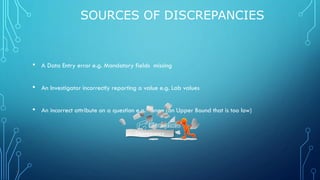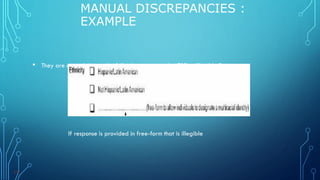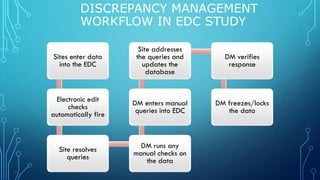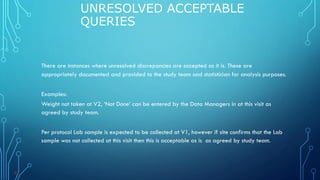The document provides an overview of discrepancy management in clinical data management. It defines discrepancies as inconsistencies in clinical trial data that need correction. It discusses the goal of discrepancy management as accurately representing captured study data. It also describes different types of discrepancies like system-generated, electronically-generated, and manual discrepancies. Additionally, it outlines the discrepancy management process which involves identifying discrepancies, resolving them by updating data or sending queries to investigators, and updating the clinical database.
















































